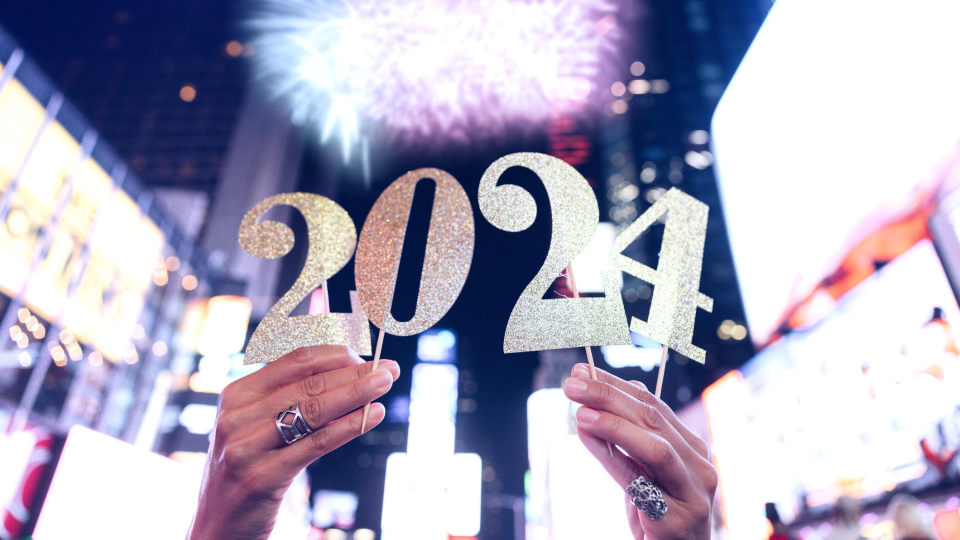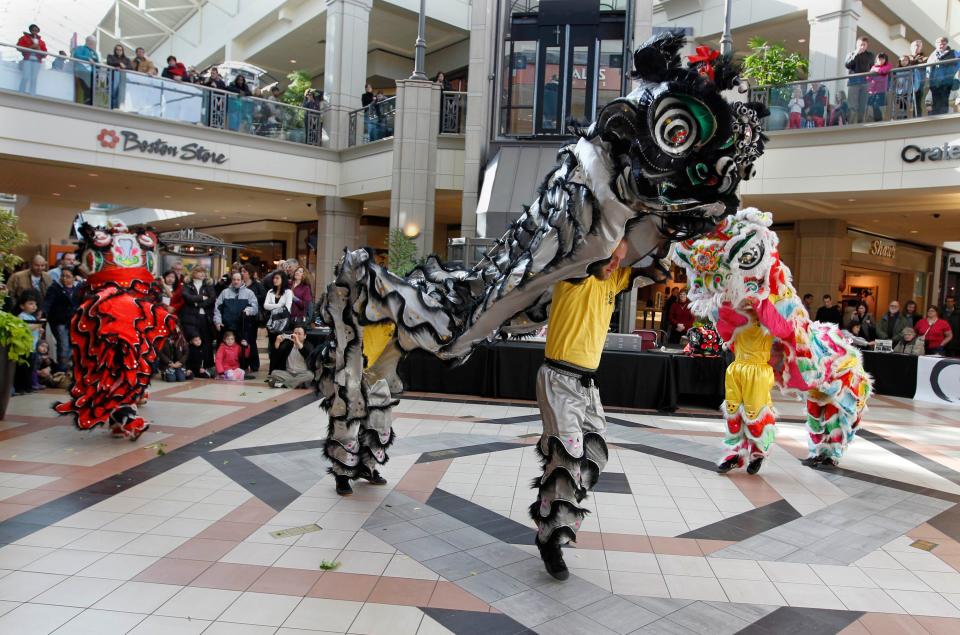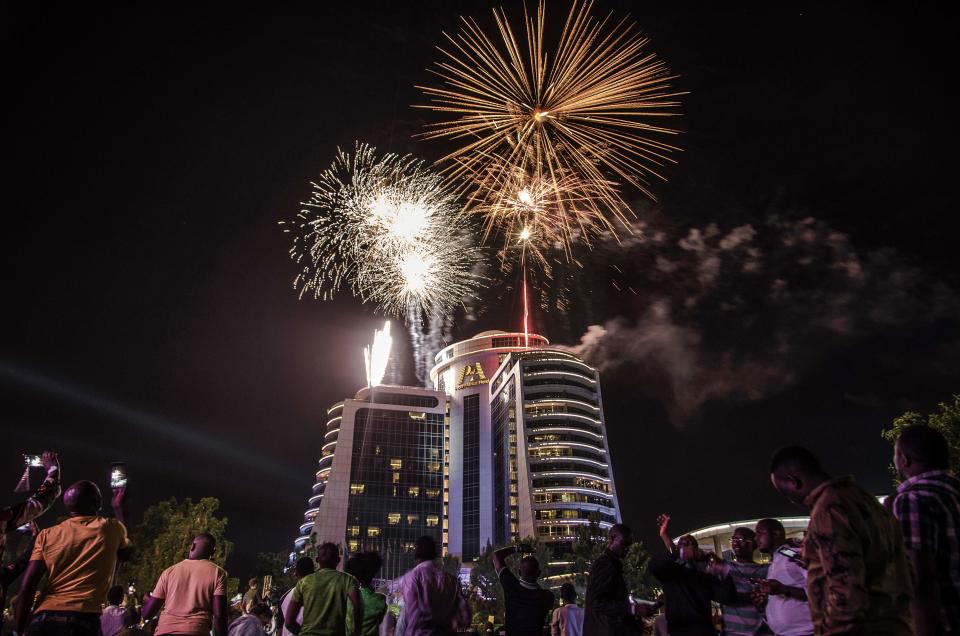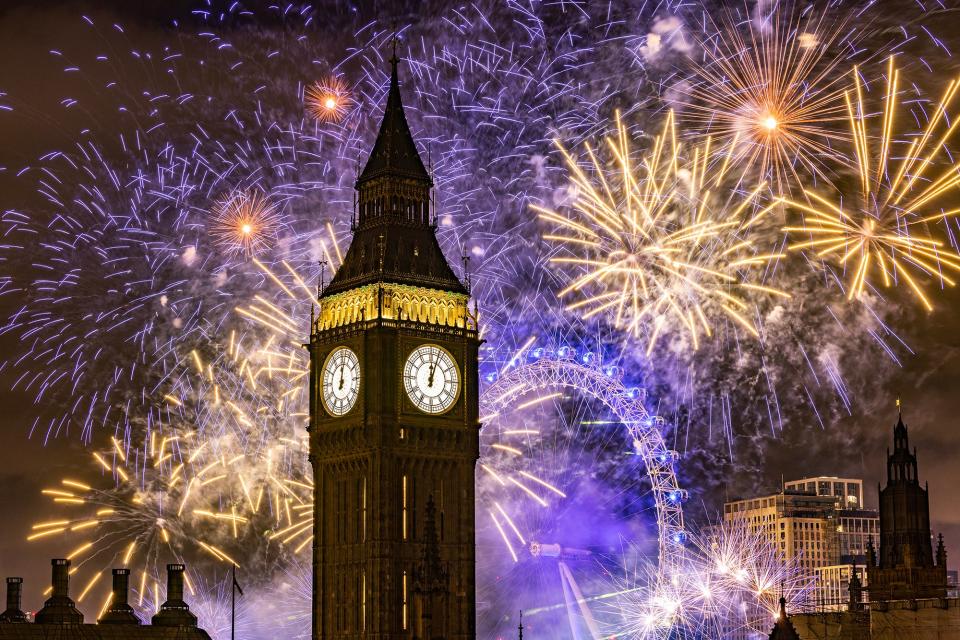New Year's traditions and superstitions: From food to suitcases and other ways to ring in 2024
The United States is a grand melting pot of many cultures and peoples from all across the globe.
This can be seen in the different ways that people celebrate New Year's. Some cultures take to the streets running for travel while others indulge in different foods to bring good luck. Regardless of how they celebrate, there is one thing in common for most cultures − in with the good and out with the bad.
How do you celebrate New Year's? Do you get in touch with your roots and celebrate like these cultures do?
What New Year's traditions are there in the U.S.?

If you find yourself in the South on New Year's Day, you can bet on finding black-eyed peas and pork somewhere along the way. This traditional combination is typically served with rice and greens. The black-eyed peas represent good luck, the pork represents prosperity, and the greens represent wealth in the new year.
People in Pennsylvania and Ohio bring good luck to the new year with pork and sauerkraut. The pork is for good luck and the sauerkraut brings riches, prosperity, and a long life.
The Times Square ball drop was the first of its kind and started in 1907. Since then, it has become a widespread tradition all over the country with ball drops happening even in Memphis and Nashville.
What New Year's traditions are there in Asia?

In China, even though their New Year is celebrated on a different day, the celebrations revolve around fireworks. The Chinese believe that the loud noises from fireworks scare off evil spirits and misfortune. It is also customary for older members of the family to give younger members a Hong Bao which is a red envelope with pocket money inside.
In Japan, people eat toshikoshi soba. The long noodles are for longevity and the buckwheat is for resilience. The noodles are easily cut which allows households to let go of the year's hardships.
In the Philippines, circles are the way to go. People will eat 12 round fruits for the 12 months of the year, and some will take it a step further by wearing polka dots. Coins are also good luck because of their roundness and monetary value. They can be carried in pockets to attract wealth.
In Syria and Lebanon, it is tradition to have a "white dish" to represent hope for all things good for the year. The white dish could be traditional dishes like shakriyeh, kibbeh labanieh, muhalabia or something simple like milk and cereal.
What New Year's traditions are there in Africa?

In Africa, there are several countries with large celebrations for the new year. As it is summer in the continent right now, most celebrations are done outside or at the beach if possible.
In Ghana, there are large celebrations across the country that include street parties, live music, and heading to the beach. Family is a large part of the celebration, so the day includes meals, gift exchanges, and cultural rituals.
In South Africa, some people celebrate the new year with the tradition of throwing old appliances and furniture out of their windows. This way they can leave the bad stuff in the past.
What New Year's traditions are there in Europe?

The people of Denmark break dishes for luck in the New Year. The more shards in front of the house, the luckier you'll be. It's also tradition to throw plates at neighbors' and friends' doors.
In Germany, along with the U.S., the New Year's kiss is a tradition. It is said that the person you kiss will dictate how the upcoming year will go.
In Germany, Sweden and Poland, people can be seen eating herring for good luck on New Year's Eve. The fish is meant to bring a year of prosperity and bounty.
The Greeks hang bundles of yellow onions on doors for the holiday. This is done to ensure good luck and fertility. Some parents will even go as far as putting onions on their children's heads to wake them up for the day.
In Ireland, it is believed that you'll dream of your future partner if you put a sprig of mistletoe under your pillow on Dec. 31. This is done by those looking for love and wish to begin the year with hope for their future partner.
Italians celebrate the new year with a traditional meal featuring lentils. The cotechino con lenticchie is a sausage and lentil dish said to bring money and good fortune in the new year.
In Romania, a New Year's tradition is to put money under the carpet before midnight strikes. This will ensure a monetarily prosperous year.
For Scots, it is believed that the first person to enter the home from the outside says much about the luck you'll have in the new year. It is customary to visit a relative or loved one after midnight on Jan. 1 to wish them well.
In Spain, they have the "las doce uvas de la suerte," or the twelve grapes of luck. In this tradition, people are to eat 12 grapes during the 12 strokes of midnight to ensure good luck in the coming year.
What New Year's traditions are there in South America?

Some traditions span multiple countries in South America and some traditions belong to one country alone. Many countries in South America follow the Spanish tradition of eating grapes on New Year's for good luck. Along with this is the tradition of colored undergarments. It is believed that yellow underwear will bring prosperity and success, red will bring love and romance, white will bring peace and harmony, and green will bring health and well-being.
Brazil has many traditions to ensure good luck in the new year. One tradition is to wear white for good luck and spiritual purification. Another tradition is to go into the sea and jump over seven waves. While jumping the waves, a person must make a wish or express a gratitude.
Also in Colombia is the tradition of carrying an empty suitcase to set yourself up for travels in the new year. Colombians will take a run around the block, or the house, when the clock strikes midnight.
In Ecuador and Mexico, the Año Viejo gets burned at midnight. The Año Viejo is a masked dummy filled with sawdust or paper and cardboard. The doll is made to represent the misfortunes of the past year.
Jordan Green covers trending news for the USAToday Network. She can be reached via email at jordan.Green@commercialappeal.com or on Twitter/X @_green_jordan_.
This article originally appeared on Memphis Commercial Appeal: New Year's superstitions: Ring in 2024 with these traditions

